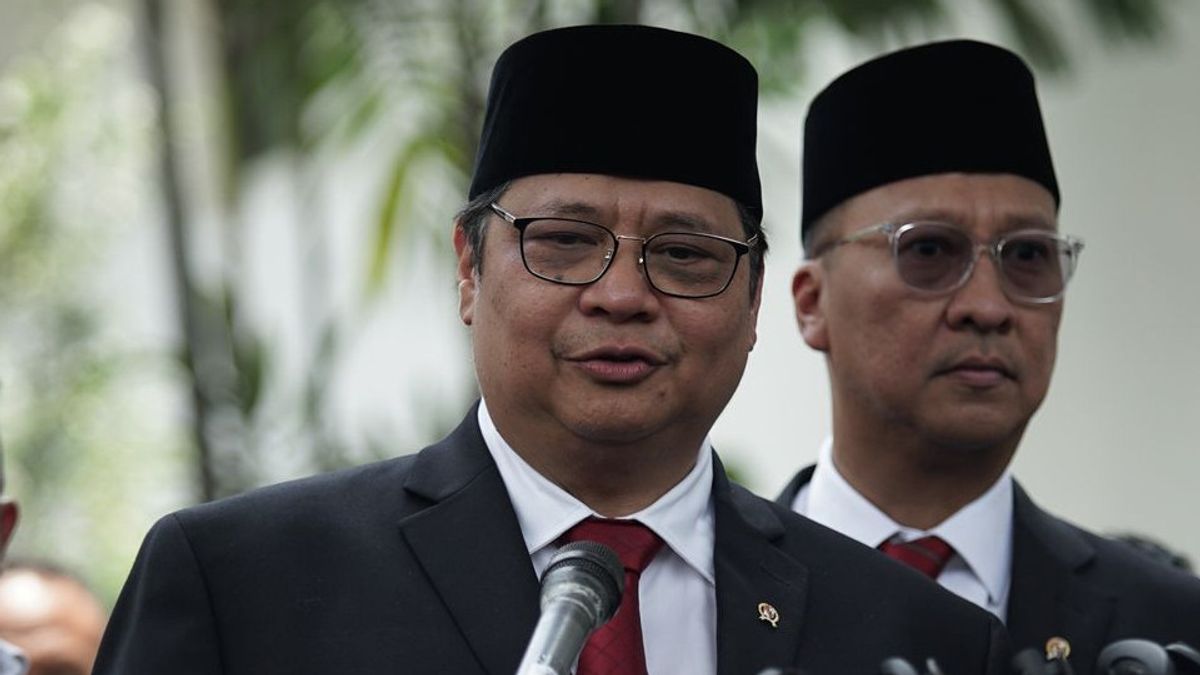JAKARTA - The Coordinating Minister for Economic Affairs, Airlangga Hartarto said the zoning division in the implementation of restrictions on community activities (PPKM) in a micro manner refers to regional zoning.
The zoning will be differentiated from green zone, yellow zone, orange zone and red zone. The Micro PPKM took effect from 9-22 February in DKI Jakarta, West Java, Central Java, East Java, Banten, Yogyakarta and, Bali.
"To determine regions, provinces, regencies, cities, of course, it will be applied depending on four parameters, namely the rate of death, cure, active cases, bed occupancy rate. For the micro level, there are simpler indicators, namely green, yellow, orange, and red zones." Airlangga said as quoted in the press conference which was held on Monday, February 8.
This zoning determination is determined by the local government which is then mapped by each governor. The determination takes into account a number of criteria as follows:
1. Green zone
Criteria: No house in one Neighborhood Unit (RT) has a positive case of COVID-19 in the last 7 days.
Scenario: active surveillance, all suspects tested, and monitoring of the case is carried out regularly.
2. Yellow zone
Criteria: there are 1 to 5 houses with positive cases during the last 7 days.
Scenario: finding a suspected case and tracing close contacts and then being asked to self-isolate under strict supervision.
3. Orange zone
Criteria: there are 6 to 10 houses with positive cases during the last 7 days.
Scenarios: finding suspected cases and tracing close contacts and then being asked to self-isolate under strict supervision, closing houses of worship, children's play areas, and other public places except for the essential sector.
4. Red zone
Criteria: there are more than 10 houses with positive cases during the last 7 days.
Scenarios: finding suspect cases and close contact tracing; perform self-isolation; closing houses of worship, children's play areas, and other public places except for the essential sector; prohibits crowds of more than 3 people; limit entry and exit of RT to a maximum of 20.00 WIB; and eliminate crowd-generating social activities.
Airlangga ensured that the micro-PPKM implementation would be accompanied by the implementation of 3T, or more massive testing, tracing, and treatment than usual. In fact, he said that later there would be free antigen swabs provided by the Ministry of Health (Kemenkes) and could be accessed by people in villages and sub-districts.
"The implementation of the 3T is carried out by free antigen swabs. So free antigen swabs will be prepared for the community in villages/sub-districts provided by the Ministry of Health using health facilities and community health center (puskesmas) in their respective areas," explained the Chairman of the Committee for Handling COVID-19 and Recovery The National Economy (KPCPEN).
Meanwhile, the tracing process or close contact tracing in villages, districts, cities will later be carried out by village supervisory non-commissioned officers (Babinsa), the community police officer (Bhabinkamtibnas) who have been educated by the Ministry of Health. "Then for treatment, the implementation of independent isolation is centered in health facilities which are coordinated by the guard posts of the village or sub-district," said Airlangga.
During the micro PPKM, there will be assistance provided by the National Police (Polri) and the National Military (TNI). The local community will also receive cloth masks which will be prepared by the Ministry of State-Owned Enterprises (BUMN) and the Ministry of Industry.
Furthermore, monitoring will be carried out by village guard posts in coordination with the COVID-19 Handling Task Force at the sub-district, district, city level and coordinating with the TNI/Polri.
"The government will of course always carry out monitoring which will be coordinated by the central COVID Task Force, the Ministry of Home Affairs and the Ministry of Villages, and the Ministry of Health as well as related ministries/institutions," he concluded.
The English, Chinese, Japanese, Arabic, and French versions are automatically generated by the AI. So there may still be inaccuracies in translating, please always see Indonesian as our main language. (system supported by DigitalSiber.id)







